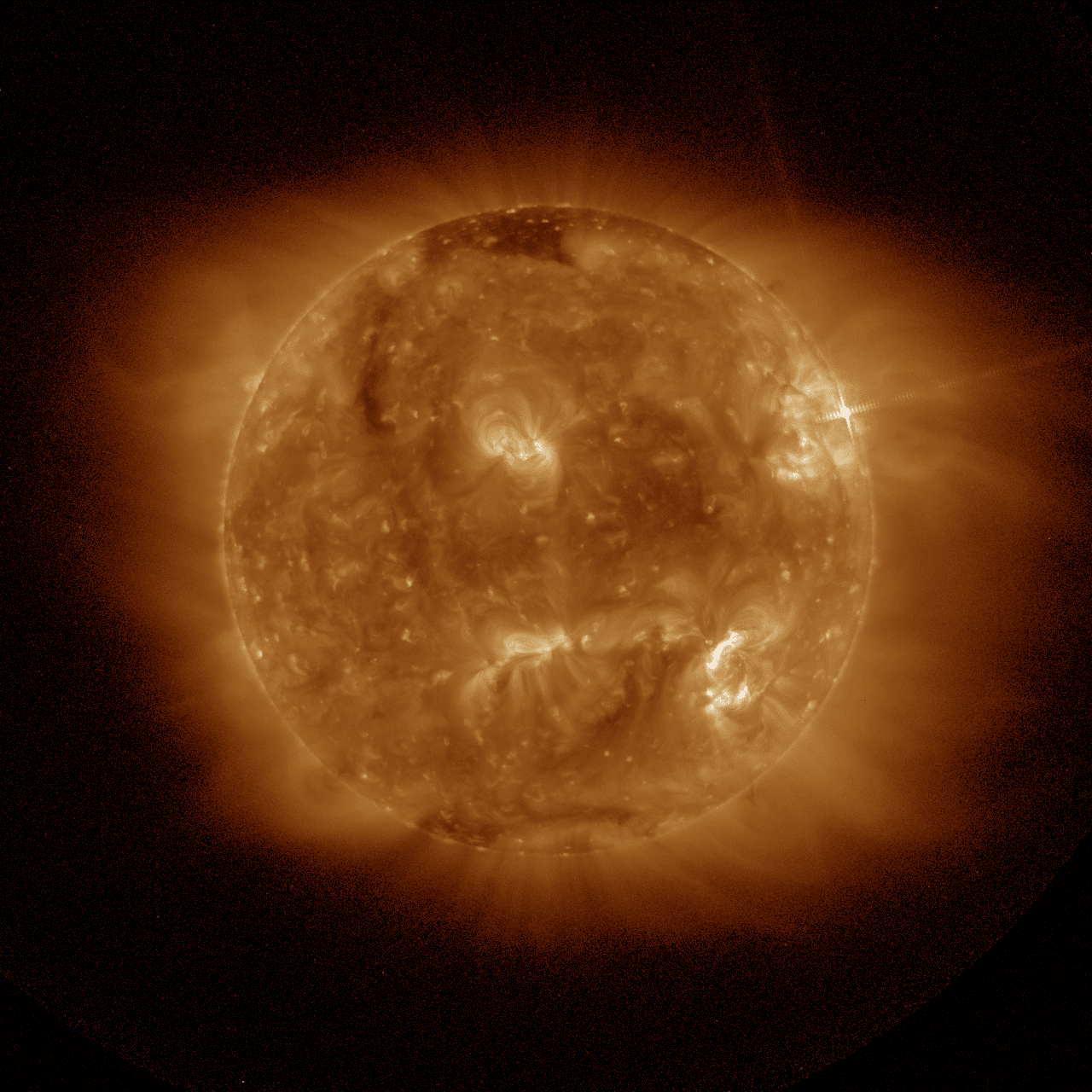Meteorologists from the Combined Force Space Component Command (CFSCC), which is part of U.S. Space Command (SPACECOM), provide daily space weather predictions from their headquarters at the Combined Space Operations Center in Vandenberg, California, SPACECOM reports on its website.
The command sends space weather information to the U.S. Department of Defense, and the department “delivers it to member countries of the North Atlantic Treaty Organization and to U.S. trading partners,” SPACECOM says. The United States is the main trading partner of Colombia, Chile, Mexico, and Peru, the Colombian newspaper La República reports on its website.
“We are the only unit that gets to work directly with space operators and speak directly to leaders up to the four-star level about how space weather affects the mission on a day-to-day basis,” said U.S. Air Force Master Sergeant Christopher Gates, flight chief for the CFSCC Space Weather team.
Space weather occurs in the Earth’s upper atmosphere, in the form of solar storms caused by disturbances in the sun, the U.S. National Oceanic and Atmospheric Administration says on its webpage. Often, storms occur near sunspots and release X-rays, visible light, and ultraviolet light, as well as highly energized protons, the agency adds.

Adverse effects
“It has been shown that space weather […] has an impact on the health of living beings, on society, technology, and space, and terrestrial infrastructure, such as modern telecommunications or positioning services, underground systems, or in space, etc.,” the Spanish meteorology website MeteoRed reports.
For years, space weather experts from government, industry, and academia have pointed out how vulnerable power grids and global positioning system satellites are to solar storms, the U.S. magazine Space News said on its website.
An example of this occurred on July 3, 2021. On that day, a solar storm impacted our planet, causing a shortwave radio blackout in the Atlantic Ocean on frequencies used by commercial airlines, emergency management, and defense systems, the Mexican newspaper El Financiero reported.
In April 2019, the Intelsat IS-29e satellite experienced an interruption that affected maritime, aeronautical, and land users in Latin America, the Caribbean, and the North Atlantic, the U.S. satellite news portal Satelital-Móvil reported. A team of CFSCC experts said that an electrostatic discharge related to solar weather activity was likely the cause of failure for the Intelsat IS-29e, SPACECOM said.
“Space weather is something that has been overlooked over the years, but now with space being such a vital part of protecting our collective safety and security, the interest in it has increased,” U.S. Air Force Major General DeAnna Burt, CFSCC commander, said on June 11. “Accurate predictions and time to maneuver are what leaders need to make good decisions,” she added.
Variations in the space environment can affect the technology in a country “that forms the backbone of the economy and national security; minimizing vulnerability to space weather needs to be a priority,” the National Autonomous University of Mexico’s Geophysics Institute reported on its website.
Seeking to minimize the damage, SPACECOM reported in a statement that the adverse effects of space weather activity on operations and technological equipment will increase in the coming years, as the solar maximum approaches, meaning greater solar activity. The agency estimates that solar activity affecting the Earth will peak in late 2024 or early 2025, the institution added.
“As the level of solar activity increases, the need to keep operators and leadership informed will only increase in importance,” Master Sgt. Gates concluded.









